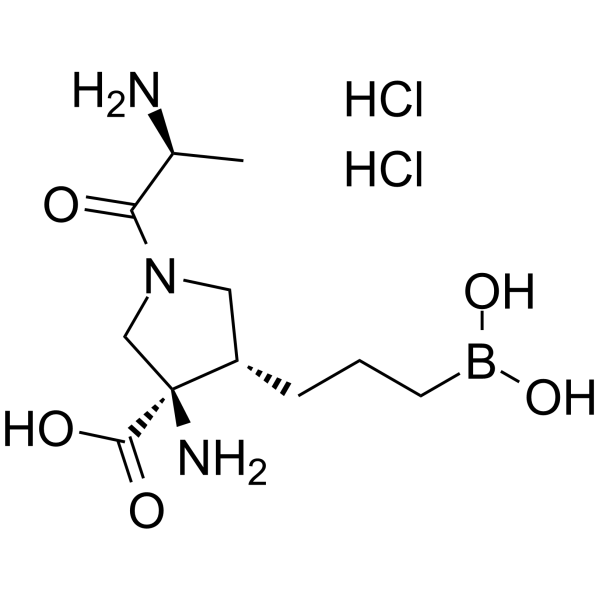Numidargistat dihydrochloride (Synonyms: CB-1158 dihydrochloride; INCB01158 dihydrochloride) |
| Catalog No.GC63120 |
Numidargistat (CB-1158) dihydrochloride is a potent and orally active inhibitor of arginase, with IC50s of 86 nM and 296 nM for recombinant human arginase 1 and recombinant human arginase 2, respectively. Immuno-oncology agent.
Products are for research use only. Not for human use. We do not sell to patients.

Sample solution is provided at 25 µL, 10mM.
Numidargistat (CB-1158) dihydrochloride is a potent and orally active inhibitor of arginase, with IC50s of 86 nM and 296 nM for recombinant human arginase 1 and recombinant human arginase 2, respectively. Immuno-oncology agent[1].
Numidargistat dihydrochloride is a potent and orally-bioavailable inhibitor of arginase, with IC50s of 86 and 296 nM for recombinant human arginase 1 and 2, respectively. Numidargistat dihydrochloride inhibits native rginase 1 (Arg1) in human granulocyte, erythrocyte, and hepatocyte lysate with IC50s of 178 nM, 116 nM and 158 nM, respectively, and blocks Arg1 in cancer patient plasma (IC50, 122 nM). Numidargistat dihydrochloride also exhibits potent inhibitory activity against arginase in human HepG2, K562 cell lines and primary human hepatocytes with IC50s of 32, 139, 210 μM, respectively. Numidargistat dihydrochloride shows no effect on NOS. In addition, Numidargistat dihydrochloride is not directly cytotoxic to murine cancer cell lines[1].
Numidargistat dihydrochloride (100 mg/kg, p.o., twice per day) increases the number of tumor-infiltrating cytotoxic cells and decreases myeloid cells in mice. Numidargistat dihydrochloride in combination with PD-L1 blockade or LY 188011 inhibits tumor growth in mice bearing CT26 cancer cells[1].
[1]. Steggerda SM, et al. Inhibition of arginase by CB-1158 blocks myeloid cell-mediated immune suppression in the tumor microenvironment. J Immunother Cancer. 2017 Dec 19;5(1):101.
Average Rating: 5 (Based on Reviews and 20 reference(s) in Google Scholar.)
GLPBIO products are for RESEARCH USE ONLY. Please make sure your review or question is research based.
Required fields are marked with *




















